The exotic city of Cordoba is one of the most fascinating destinations in southern Spain.
Cordoba was once Europe’s biggest city and a center for art and learning. The city has a unique confluence of Moorish, Jewish, and Christian cultures.
At the height of its glory, Cordoba had over 300 mosques and palaces, including the endless palm grove that’s the world renowned Mezquita.
At its heart are a labyrinth of narrow streets, flower filled patios, and secret corners. All this makes Cordoba a natural film set.
Once a year, Cordoba’s residents throw open their home’s inner patios, revealing intricate gardens. The city even has a delicious cuisine.
Travelers to Spain often forget to stop in Cordoba.
Instead, tourists head to Seville and Granada. But, with its potent attractions, Cordoba is one of the best small cities in Europe and deserves a detour.
This one day in Cordoba itinerary takes you to the top sites and gives you a sense of the grandeur and history of Cordoba.
Mini History of Cordoba
Cordoba began life as the Roman colony of Corduba, founded in 152 BC. It rose to power and became the capital of Andalusia. The Visigoths conquered the city, as with Rome itself, in 572.
In 711 AD, Cordoba fell to the Moors. It became the Islamic capital on the Iberian Peninsula. Cordoba thrived as a dynamic center of education. Scholars from all over the world flocked to the city.
By the 10th century, the Islamic Kingdom was at the height of its powers. Cordoba was one of world’s most cultured and intellectual cities.
During Cordoba’s zenith, the Roman Bridge was a major roadway. It helped to establish Cordoba’s strategic importance in Andalusia.
Cordoba became known for its artisans. They were skilled in silver, tile, leather, and textiles. Cordoba was also renowned for its universities, mosques, and other buildings.
It was a city where Jews, Muslims, and Christians coexisted mostly peacefully. Though the various Muslim factions weren’t always at peace.
In the 13th century, Cordoba was captured by Christian crusaders, during what was known as the Spanish Reconquista.
After the Christian conquest, everything changed and Cordoba went into decline. The influence of the Moors diminished and Jews were expelled from the city.
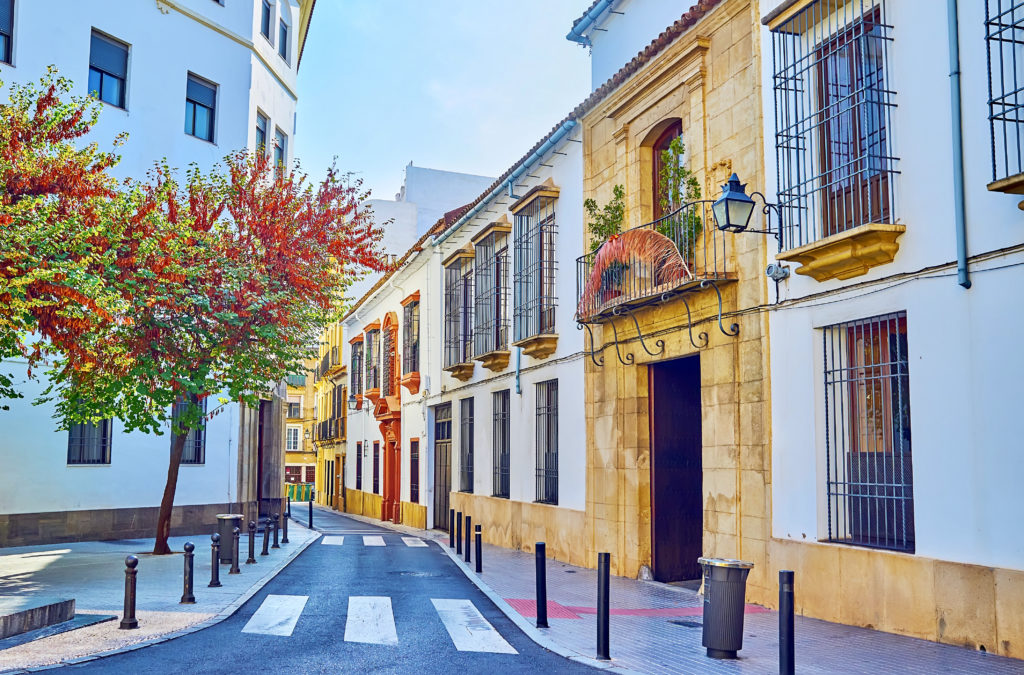
Still, many churches were built, including the cathedral in the center of the largest mosque in the city, known as the Mezquita. By the 18th century, only 20,000 people lived in Cordoba.
Today, Cordoba is a popular tourist destination, with plenty of historic attractions to keep history and architecture buffs happy.
Overview Of One Day In Cordoba Itinerary
Here’s a quick breakdown of what you can see with this itinerary:
- Begin with a visit to the stunning Mosque-Cathedral
- Explore the Jewish Quarter, stop at the Synagogue. Grab lunch.
- Visit the Roman Temple and/or Archaeological Museum
- Visit the Alcazar of Cordoba or take a patio tour
- Stroll across the Roman Bridge
Tickets & Tours
Here are some tickets and tours you may want to book in advance, especialy in high season:
- mosque-cathedral skip the line ticket
- mosque-cathedral guided tour
- Jewish quarter guided tour
- alcazar ticket
- alcazar guided tour
- ticket for medina azahara
- tour of flower patios
- 3 hour monuments tour
One Day in Cordoba Itinerary
You’ll want to start your one day in Cordoba as early as possible.
If you need breakfast, pop into El Arriate-Café y Tapas. You’ll pass it en route from the train station to the historic center.
1. Mezquita: The Greatest Mosque In The World
Start with Cordoba’s #1 site, the Mosque-Cathedral of Cordoba, nicknamed the Mezquita.
Dating from the 8th century, it’s a UNESCO site and one of the world’s most well-preserved Islamic buildings. This building alone is reason enough to visit Cordoba.
In the 16th century, King Ferdinand and Queen Isabella converted it into a cathedral, calling it the Cathedral of Our Lady of Assumption. For years, it served as a place of worship for both Christians and Muslims.
I expected the cultural mash up to be discordant and perplexing. But I found the place fascinating, a snapshot of the sophisticated dual culture that once existed in Cordoba.
You walk in from the Patio de los Naranjos, full of of orange trees, through the Porta de las Palmas. You’re immediately in an endless forest of 1300 candy cane horseshoe arches.
1000 Roman and Visigoth columns support double decker arches in alternating red and white stripes. It’s astounding.
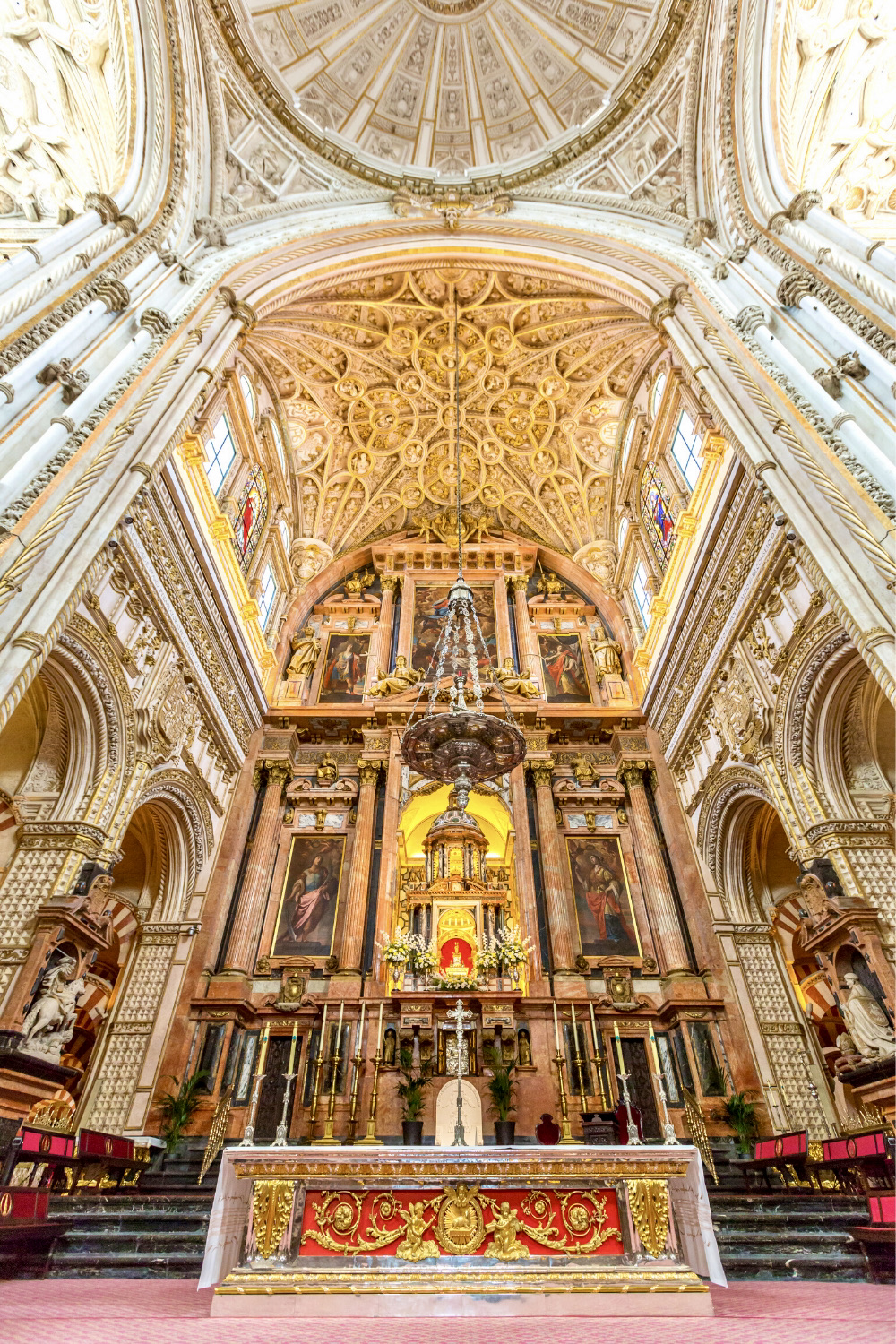
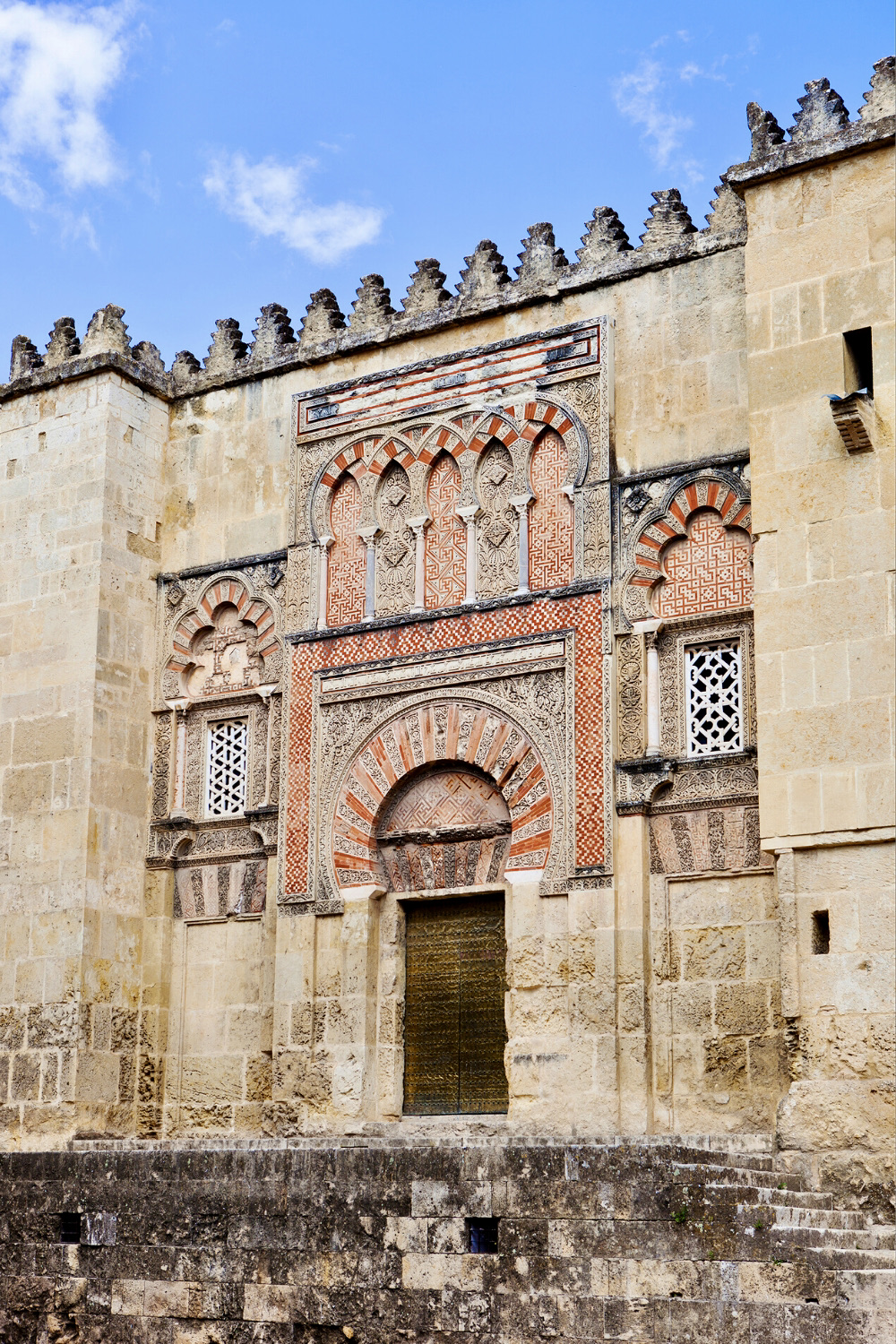
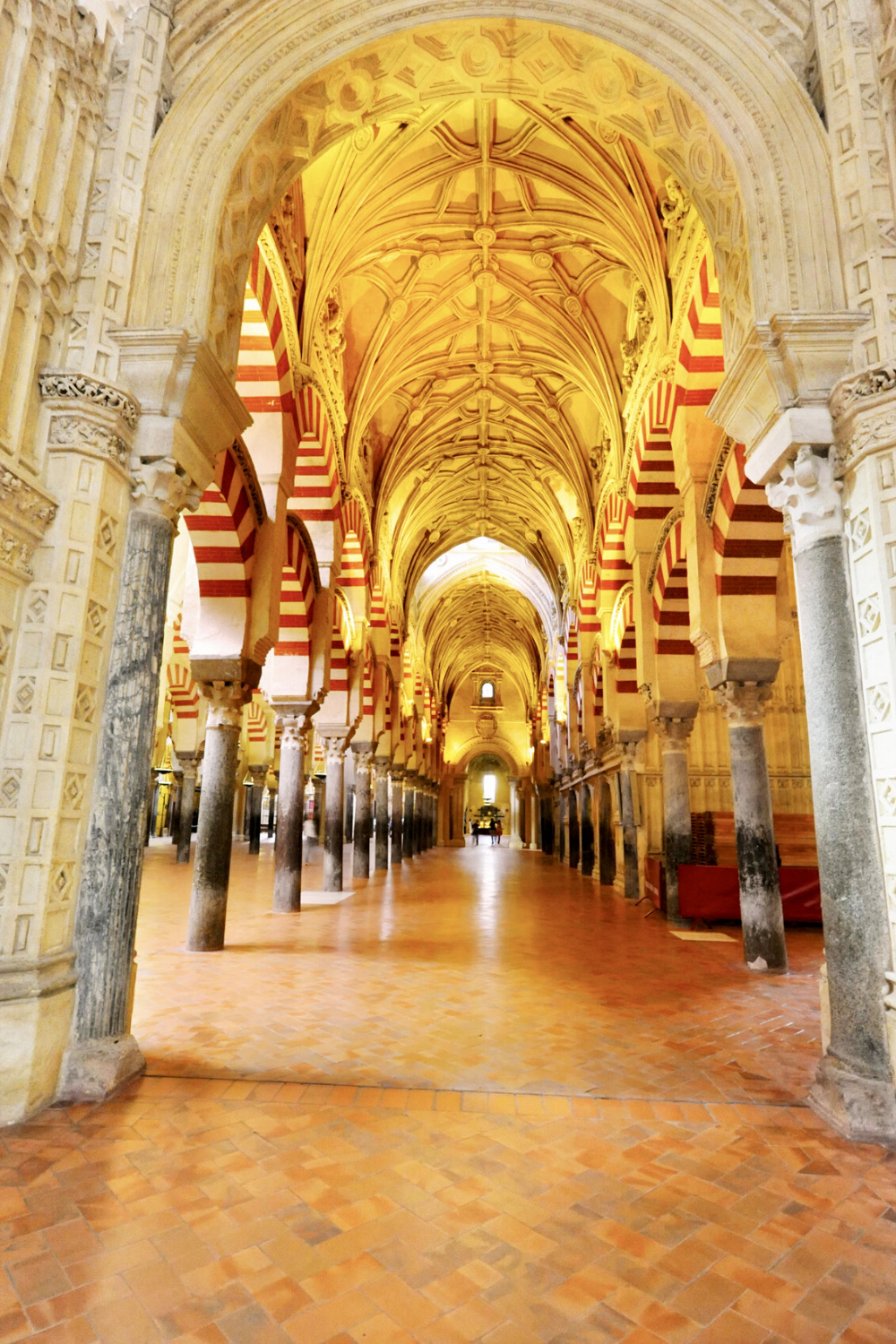
The most stunning part of the Mezquita is the Mihrab, or high altar. It’s right across from the main entrance. It’s covered in gold and shimmering mosaic fragments. The dome is gilded with “tree of life” designs.
The Renaissance cathedral is built right in the center, sharing marble and space with the Islamic arches. The vaulted ceilings are stunning, with frescos of cherubs.
If you’re visiting in high season, you should purchase online in advance for 11 euros. Click here to pre-purchase a ticket. Click here to book a 1 hour guided tour of this magnificent edifice.
The Mezquita is open from 8:30 to 9:30 am, 10 am to 2 pm, and 4 pm to 7 pm daily. At night, you can go to the sound and light show for 18 euros.
2. Bell Tower
The original minaret looked like the La Giralda bell tower in Seville. After the Christian conquest, the former minaret of the Mezquita was converted into a bell tower.
Today, you can climb the 54 meter high bell tower for fine panoramas and a bird’s-eye view of the main Mezquita building.
You can access to the bell tower from 9:30 am until 5:30 pm. Small groups are let in every 30 minutes. To climb the tower, you pay an extra 3 euros.
The best thing to do is buy your ticket before heading into the Mezquita. Tickets are sold on the inner side of the Puerta del Perdon, next to the tower.
3. Jewish Quarter
After your Mezquita visit, head to the old town, or Jewish Quarter. This area was once a vibrant Jewish community from the 10th to the 15th century.
Now, it’s the largest old town in Spain and a UNESCO World Heritage site. It’s home to many historic monuments. You may want to book a 2 hour guided walking tour of this area.
The Almodovar Gate is the historic entryway. Dating from the 14th century, it’s the oldest and best preserved of Cordoba’s defensive gates. It’s a good place to began a stroll through the charming Jewish Quarter.
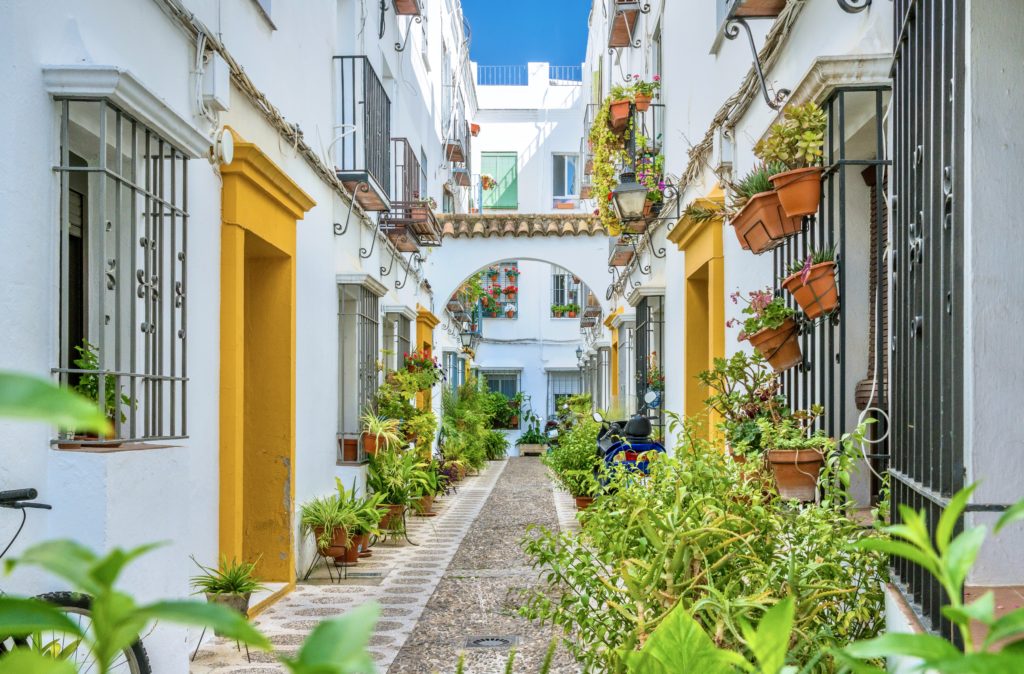
In this part of Cordoba, the streets are narrow. The buildings are mostly white-washed, with splashes of color from the signature hanging pots and colorful window box displays.
The quarter is teeming with adorable cafes and maze-like streets. This is where you should grab some lunch midday.
I had lunch at El Rincon de Carmen, which I definitely recommend and has a gorgeous patio.
Admire the Gothic-Mudejar facade of the Casa del Indiano. Peak at the Instagram popular Calleja de las Flores.
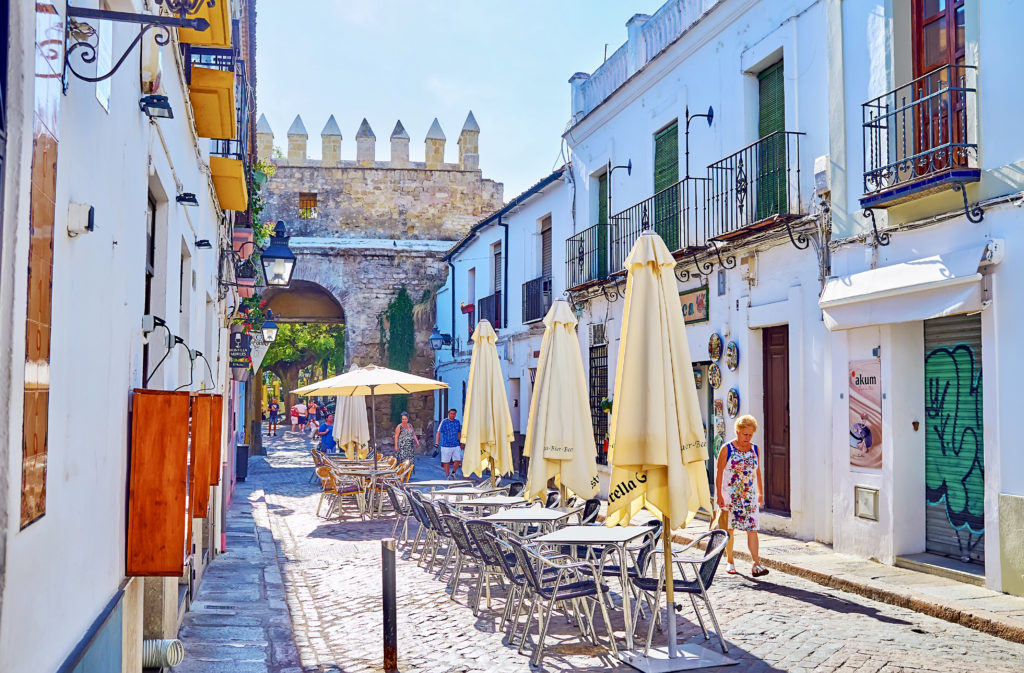
Say hello to the statue of Maimonides, Cordoba’s famed Jewish scholar and spiritual leader. Or stop in at the Casa de las Bulas de la Santa Cruzada, Cordoba’s bullfighting museum.
4. Jewish Synagogue
Definitely pop into the Jewish Synagogue. It’s the only remaining Jewish structure in the Andalusia. It’s also one of the best-preserved ones in Spain.
This small synagogue served as a temple until the Jews were removed from Spain during the Spanish Inquisition. Inside, you’ll find a lush courtyard, prayer room, and women’s gallery. There are some incredibly intricate carvings.
The synagogue is free to visit. It’s open from Tuesday to Sunday from 9:00 am to 9:00 pm. On Sundays, the synagogue closes at 3:00 pm.
Click here to book a 3 hour guided tour of the synagogue, along with the cathedral and alcazar.
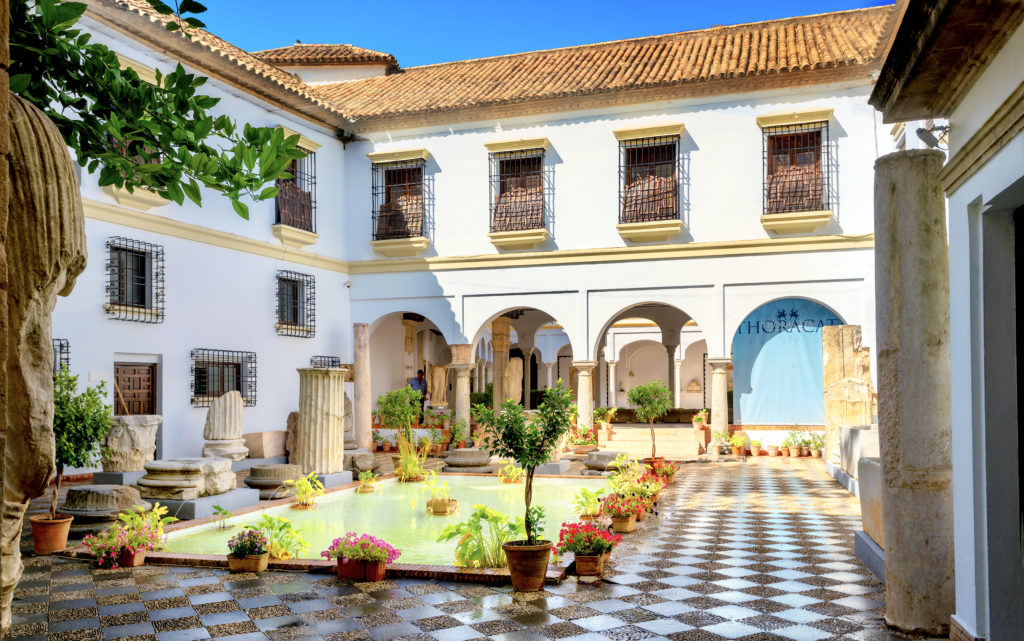
5. Archaeological Museum
Tucked away in a pretty Andalusian square, and a bit hard to actually find, is Cordoba’s Archaeological Museum.
It’s a hidden gem in Cordoba — a compact museum with archeological remains and historic artifacts tracing the complex 3,000 year history of Córdoba.
Everything is well-lit and displayed in both Spanish and English. The main attraction is the remains of a Roman Theater in its basement.
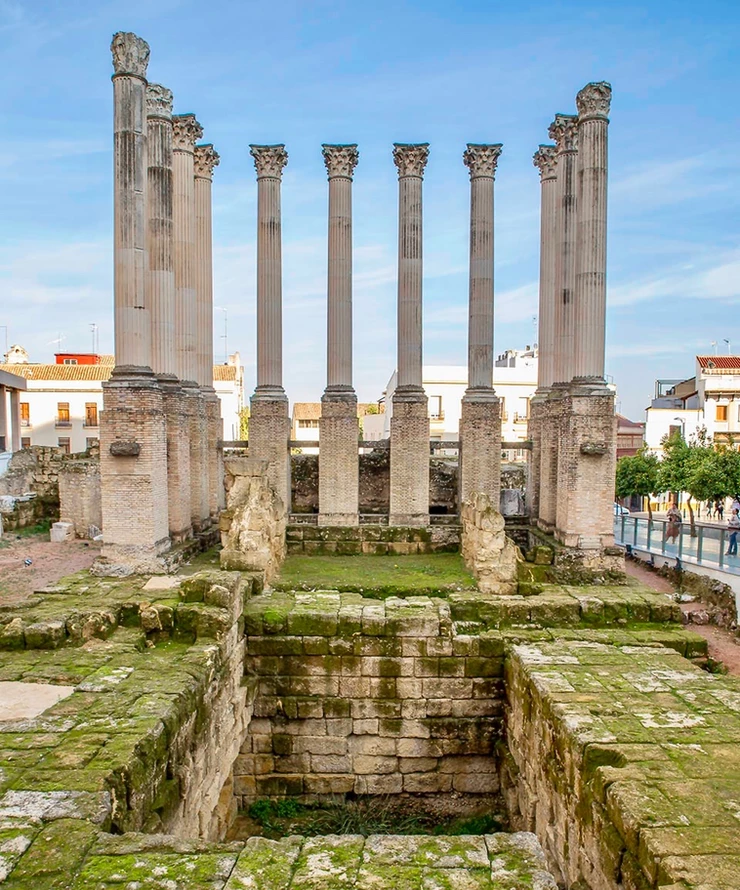
6. Roman Temple
You can also visit Cordoba’s Roman Temple. The temple sits on a hill above the historic center, on what would have been the eastern edge of Cordoba in Roman times. From there, it would have been visible for miles, a striking symbol of dominance and imperial power.
Construction began in the 1st century A.D. during the reign of Emperor Claudius and ended some forty years later, during the reign of Emperor Domitian.
The marble temple was popularly known as the Temple of Claudio Marcelo. It has 11 monumental Corinthian columns, topped with beautiful capitals.
It was a hexastyle temple, with 6 columns on the front facade and 10 columns on each side. Though only a few columns remain now, excavations revealed that the temple was 32 meters long and 16 wide, a remarkable size.
The temple was discovered in the 1950s during the expansion of the City Hall. It was not Cordoba’s only Roman temple. But it’s the only one discovered through archaeological excavation.
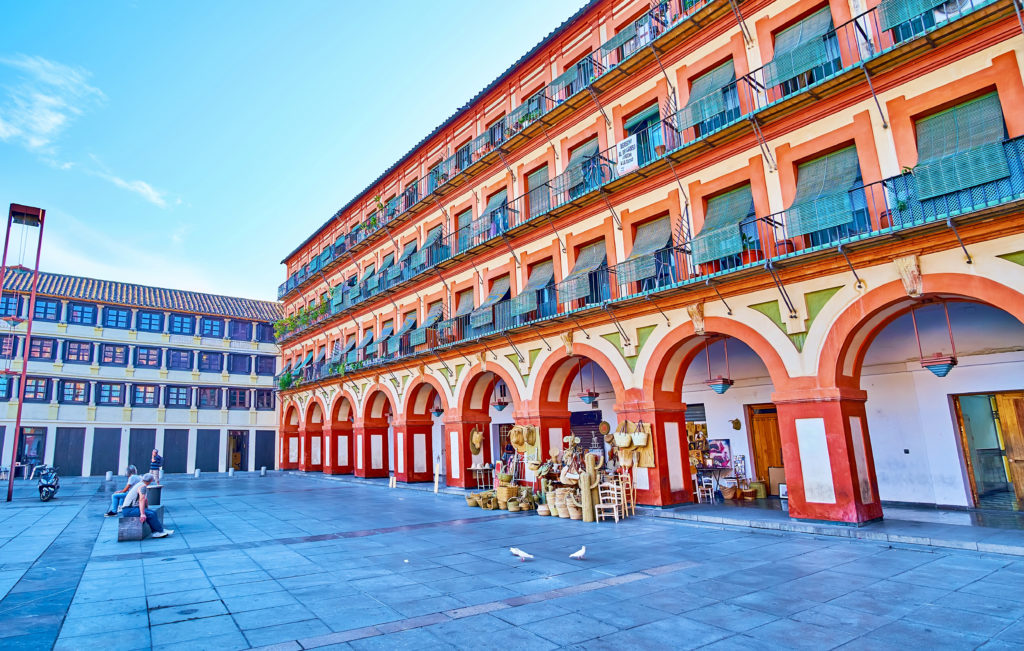
7. Plaza de la Corredera
The Plaza de la Corredera is just one minute from the Roman Temple. It’s one of Cordoba’s most iconic squares, with a pleasing architectural ensemble.
It’s a quadrangular square in Andalusia, reminiscent of Plaza Mayor in Madrid. The plaza is considered to be the center of daily life in Cordoba.
You enter and exit via the Arco Alto and Arco Bajo gates. There’s a series of pretty arcades in yellow and faded red. You’ll find cafes, shops, markets, and bars. You can also shop for souvenirs.
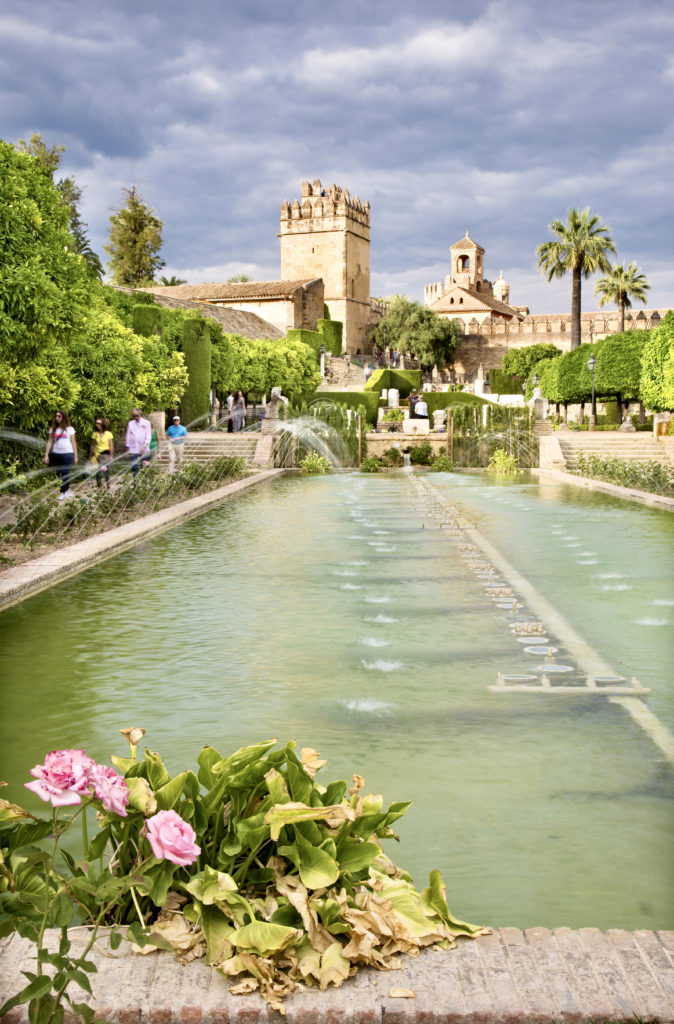
8. Alcazar de los Reyes Cristianos
In the late afternoon of your one day in Cordoba, head south to Cordoba’s Alcazar de los Reyes Cristianos by the river. The term translates to the Castle of the Christian Kings. It’s an elegant Mudéjar palace and the second most important complex in Cordoba.
The Alcazar can’t hold a candle to Seville’s Royal Alcazar. But I thought it was still worth a visit.
The alcazar once served as a residence for the Spanish Catholic kings. It was a primary residence for Queen Isabella and King Ferdinand.
In 1328, the Catholic King Alfonso XI of Castile commissioned the royal palace. He chose a Mudejar style for the building and the gardens. There were crenellated turrets and elaborate baths.
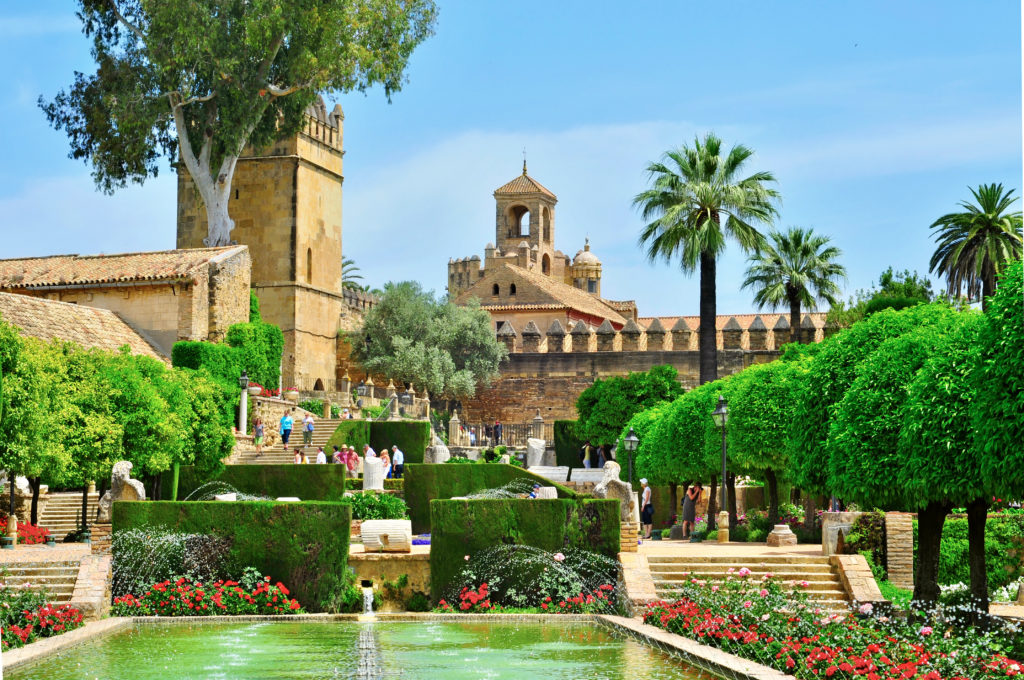
The three tiered gardens are miniature versions of those you see in Granada’s Alhambra.
They feature large paths lined with cypress trees, citrus trees, palm trees, ponds, and beautiful fountains. You could almost forget you’re in an actual city.
Though beautiful, the Alcazar was also the site of some dark deeds. In the 15th century, it was the scene of some of the fiercest battles of the Civil War, which pitted Henry IV of Castile against his half-brother Alfonso.
Towards the close of the 15th century, it served as the official headquarters of the gruesome Inquisition, led by Henry’s successor Isabella I and her husband Ferdinand.
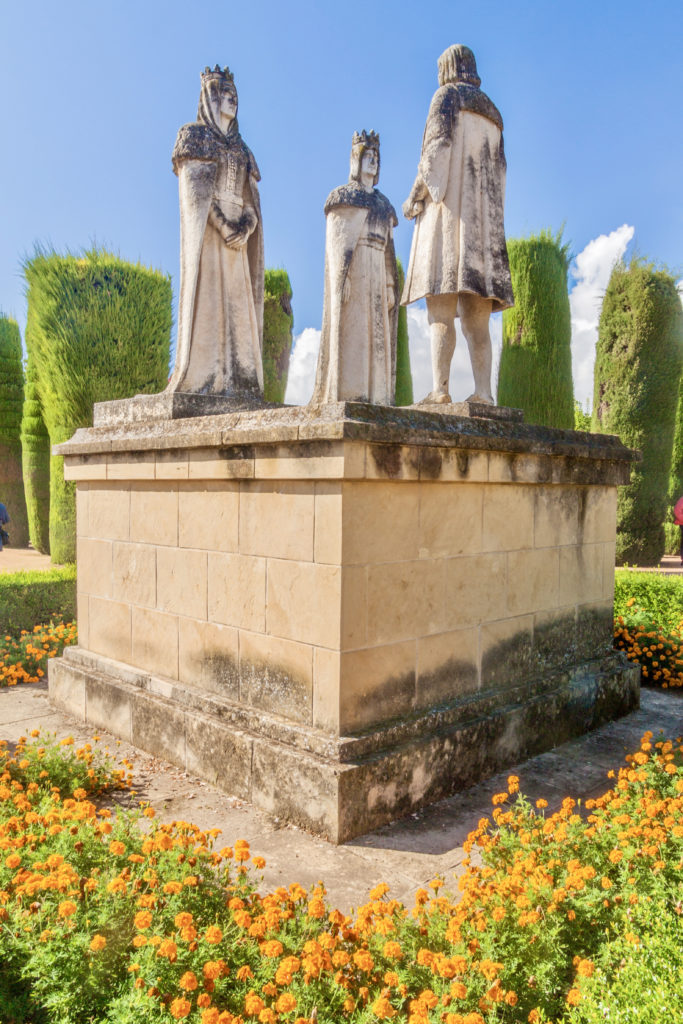
They also converted the serene baths into prisons and torture chambers. And plotted their takeover of the Nasrid-ruled Caliphate of Granada.
Nowadays, there’s also a Mosaics Hall in what used to be a chapel. It features a stunning display of Roman art dating from the 2nd and 3rd centuries A.D.
The works were discovered in the late 1950s under one of Cordoba’s main squares near the Roman Temple.
The Alcazar is open Tuesday to Friday between 8:15 am and 8:00 pm, Saturdays from 9:30 am to 6:00 pm, and Sundays from 8:45 am to 2:45 pm. There’s also a museum, which tells the story of the complex.
Click here to book a skip the line ticket and here if you’d like to book a 1 hour guided tour of the alcazar.
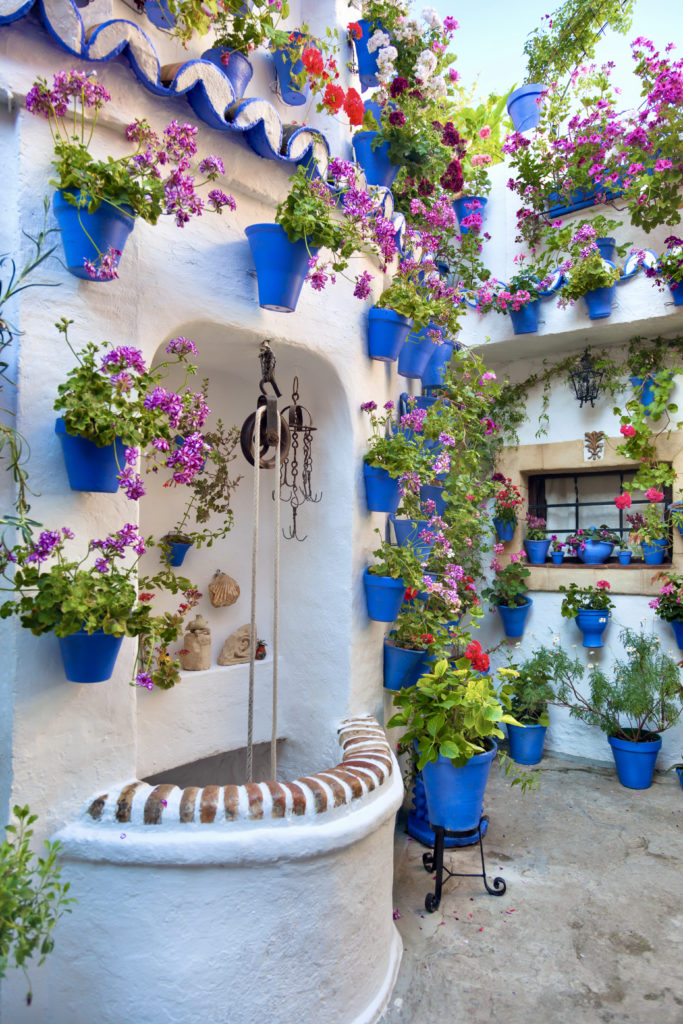
9. Cordoba’s Patios
As an alternative to the alcazar, you may prefer to tour Cordoba’s beautiful flower patios. Cordoba’s gorgeous interior patios are tucked away, mostly out of sight from visitors.
These unique attractions arose from necessity. Cordoba is one of the hottest cities in Europe. The patios are walled in open air atriums. Because the stone walls blocked the sun, the patios served as a cool retreat from the heat.
Over the centuries, the patios became more decorative. Today, they are gorgeously, with colorful flowers and fountains.
Since 1918, Cordoba has hosted a festival of the patios, the Fiesta de los Patios. Citizens vie to take the prize for the prettiest patio.
If you’d like to see Cordoba’s patios, click here to book a guided tour.
10. Roman Bridge
At the end of your one day in Cordoba, stroll across the Roman Bridge, which is both a UNESCO site and Game of Thrones filming location in Andalusia.
The stunning bridge, now traffic free, is part of Cordoba’s UNESCO classification. Set between the city’s banks, it’s an excellent place for a leisurely airy stroll. You can feel history beneath your feet.
The Roman Bridge was built in the 1st century B.C., and so is from the era of Emperor Augustus. It formed part of the ancient Via Augusta, which ran from Girona to Cadiz.
As the only bridge that crossed the Guadalquivir River for 20 centuries, it was important. Most of the current structure date from an 8th century Moorish reconstruction.
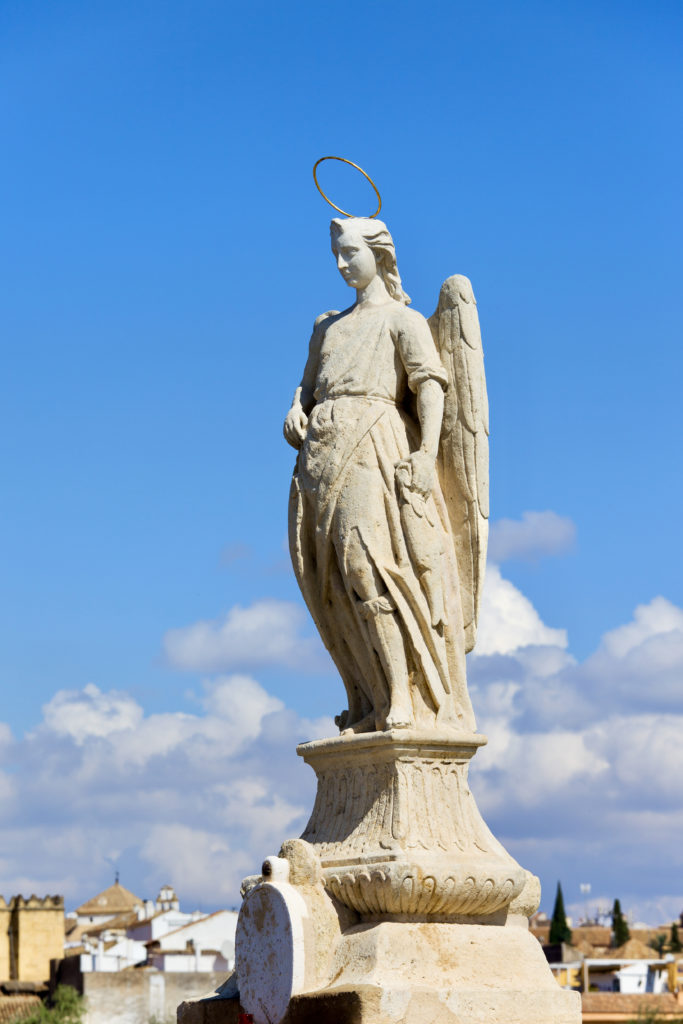
The bridge has 16 arches supported by robust spurs with irregular semi-cylindrical buttresses. It’s built in Flemish bond.
The scenic views from the bridge are spectacular. Whether you are facing north or south, there are great views of the mosque-cathedral Mezquita or the Calahorra Tower. In 2009, the bridge was happily converted into a pedestrian walkway.
In the center of the bridge, there’s a small 17th century shrine and sculpture of San Rafael. It was carved in 1651 by Bernabe Gomez del Rio.
Devotees often burn candles in front of the statue. It was commissioned to show gratitude for the ending of the plague, which killed many Cordobans. Cordoba celebrates this day annually on October 24.
11. Puerta del Puenta
At the north end of the bridge is the 16th century Renaissance Gate to the town center, Puerta del Punta.
It looks a bit like a triumphal arch, or a Greek building with its four Doric columns. There’s a 1 € fee to get to the top.
The gate has been extensively renovated, work starting and stopping over the years. I actually liked it best lit up at night.
12. Calahorra Tower
At the southern end of the bridge, you’ll find the Calahorra Tower.
The tower is a fortified gate built in 1369 to guard the entrance to Cordoba. It was originally Moorish, but was adapted into a Christian stronghold in the 15th century.
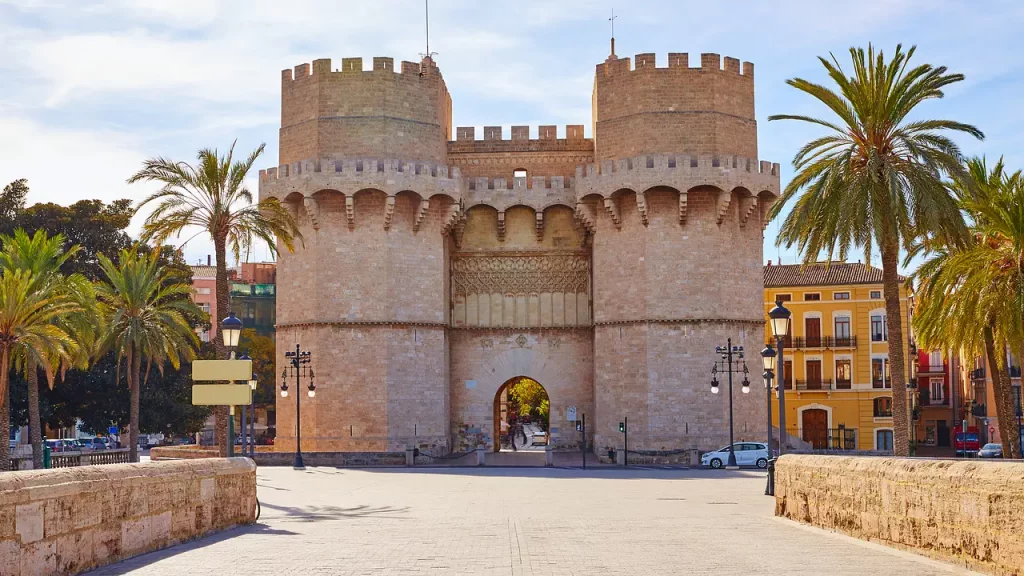
The Calahorra Tower houses the Museo Vivo de Al-Andaluz (“Land of the West”). The museum is rather sloppily assembled.
I would skip it in favor of time spent admiring the views. Climb the narrow staircase to the tower’s summit for a nice view of the Roman Bridge and city on the other side of the Guadalquivir.
13. Dinner
If you can stay for dinner in Cordoba and don’t need to catch a train, here’s a guide to the best restaurants in Cordoba.
The two classic dishes in Cordoba are Salmorejo, a creamy soup, and the Flamenquin, a roll of ham and veal.
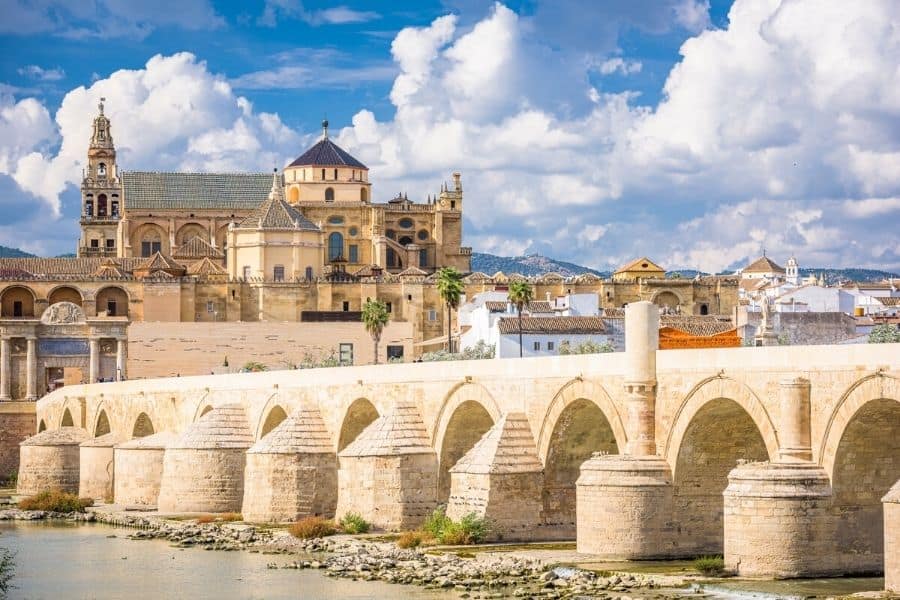
Tips For Visiting Cordoba
1. How To Get To Cordoba
Cordoba is a great day trip destination. The city is located between Madrid and Seville and served by high speed trains.
To get to Cordoba, it takes around 2 hours from Madrid, 40 minutes from Seville, or 1:40 from Granada.
The old town is about a 25 minute walk from the central train station. You can walk or catch a taxi.
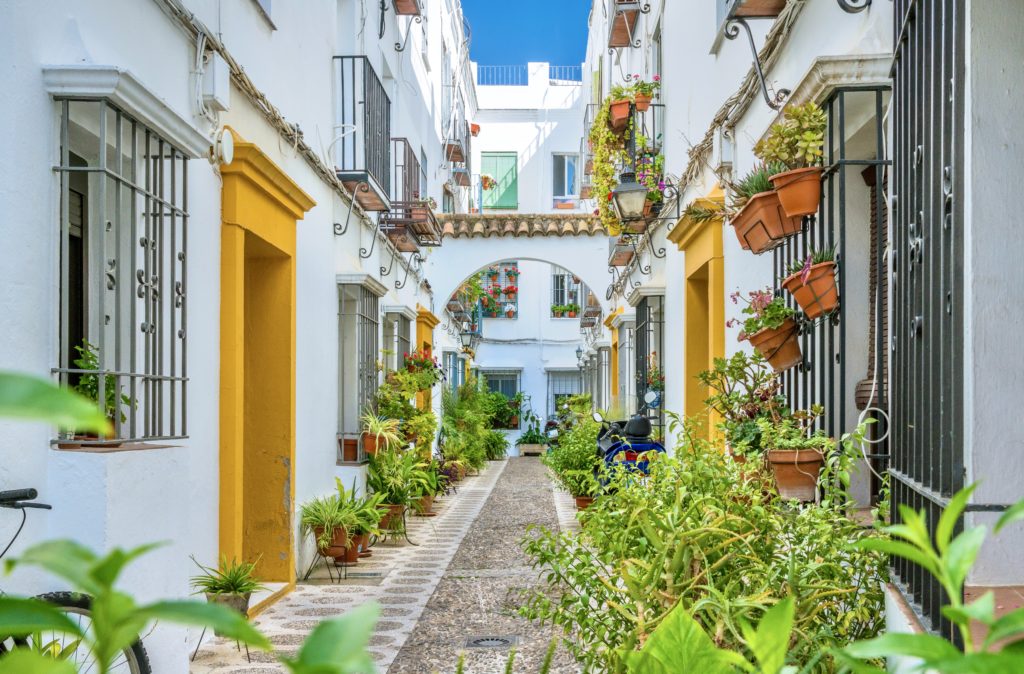
Once there, you’ll find that Cordoba is compact and easily walkable.
If you’re driving to Cordoba, park outside the historic center in one of the well marked lots. Look for signs as you enter the city. Try to nab a spot near the Roman bridge for an easy walk to the main attractions in Cordoba.
Would you rather take a guided tour of Cordoba? No problem. You can book a full day guided tour from Seville or a full day tour from Malaga.
2. When To Go To Cordoba
Cordoba has a generally warm climate. It’s best to visit during the spring, fall, or winter.
From June to September, Cordoba will be blisteringly hot and humid, making sightseeing rather impossible. I visited in winter and the city was pleasant and sunny.
Mid-spring is the most popular time to visit Cordoba. Then, you’ll find flowers, festivals, and parades.
If you visit in the second and/or third week of May, you can enjoy the world famous La Fiesta de los Patios.
3. How To Get Around Cordoba
Cordoba is a super walkable city. You can get to most attractions on foot.
But if your feet are tired, you can also take a guided bike tour or a guided Segway tour.
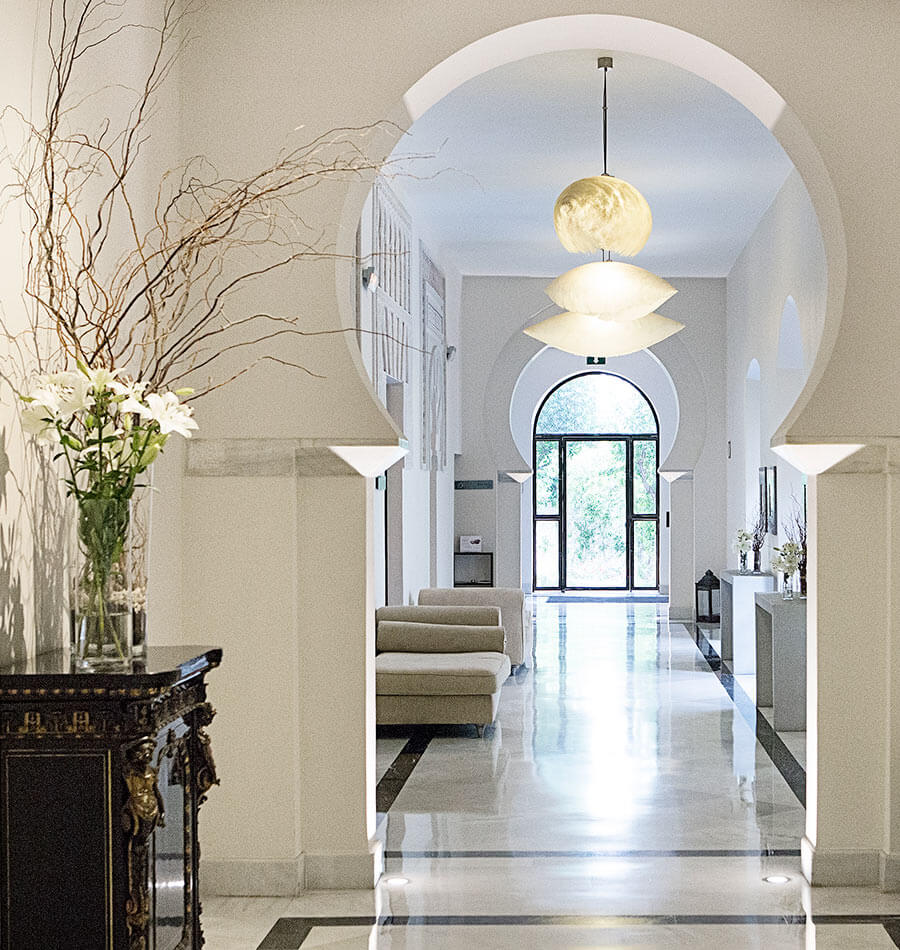
4. Where To Stay In Cordoba
There are plenty of good hotel options in Cordoba.
The Patio del Posadero Hotel Boutique B&B is an ultra chic boutique hotel housed in a fully restored 15th century house. The Hotel Hospes Palacio del Bailio is a luxury hotel in a palatial 16th century building. It comes complete with Moorish flourishes and frescos.
The Hotel Viento 10 is a swish boutique hotel in a Moorish style house. It has a rooftop terrace with a great view of the Mezquita.
Finally, the Hotel Madinat is an upscale hotel housed in a superbly restored 18th century mansion. It’s a mix of contemporary styling and Arab flourishes. The hotel has two terraces and a rooftop watch tower.
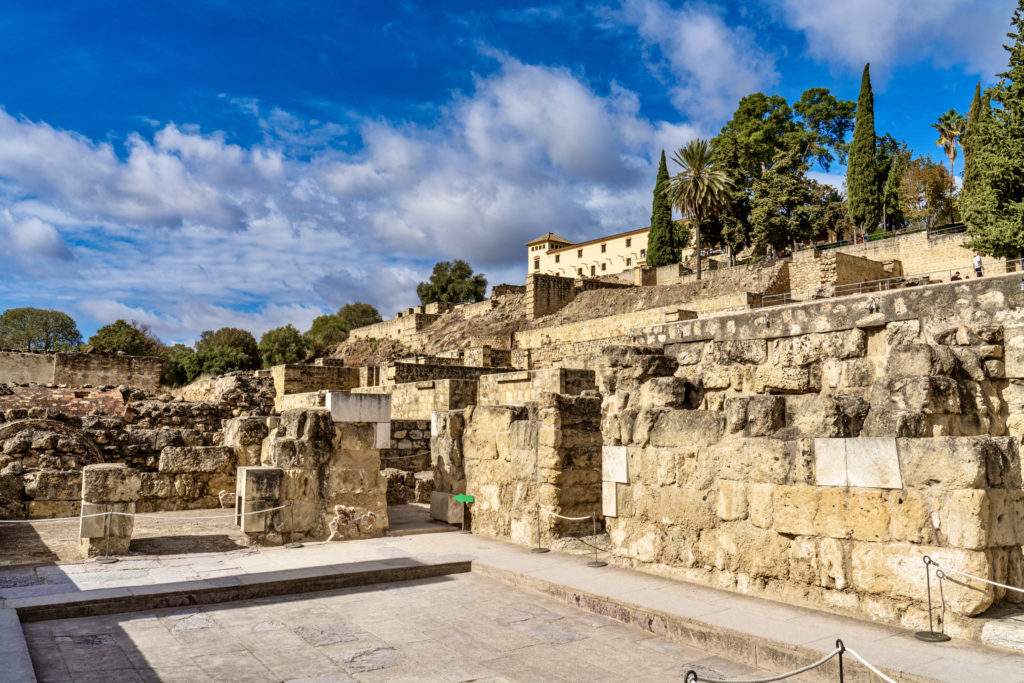
Extra Time?
If you have more than one day in Cordoba, there are few places quite nearby.
1. Medina Azahara: 8 Minutes From Cordoba
If you have more than 1 say in in Cordoba, the first thing to do is head to the ruins of Andalusia’s medieval capital.
The Medina Azahara is the only must see attraction in Cordoba that’s not within walking distance of the historic center. It’s a few miles to the west.
You probably can’t fit this wonderful attraction into a one day in Cordoba itinerary. But if you have extra time, the Medina Azahara is well worth a visit. Especially if you’re on the UNESCO trail in Europe.
The Medina is one of the largest archaeological sites in Spain. It will give you a deeper understanding of the Moorish history of Cordoba.
The UNESCO-listed site was a former Caliph’s palace city. Construction began in 936. “The Shining City” was once the administrative capital of Islamic Spain.
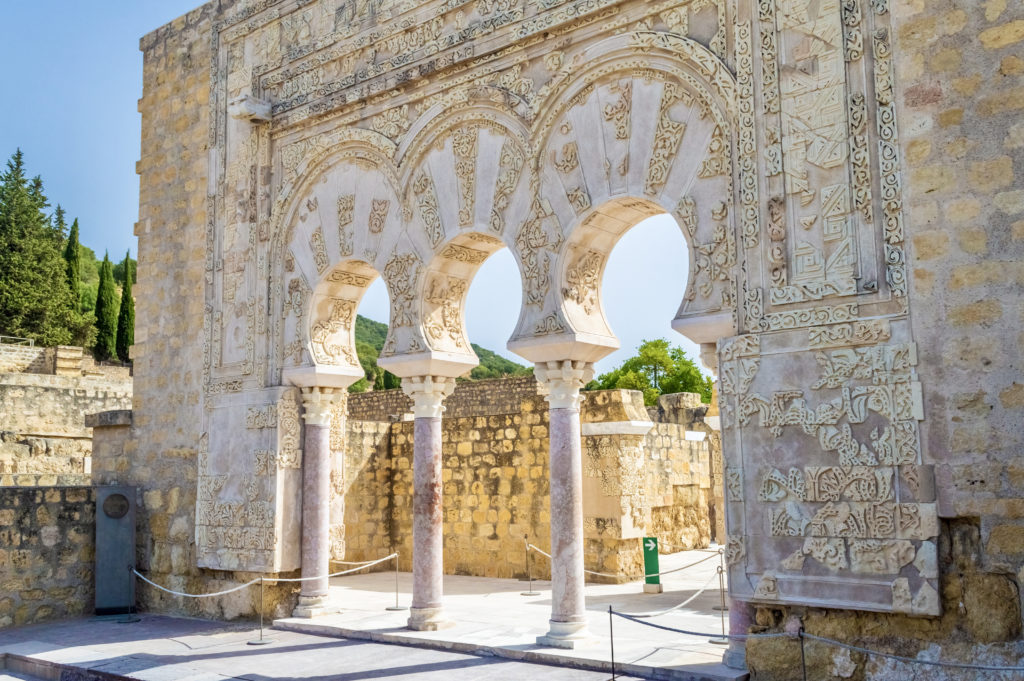
This Caliphate City was sacked after only 70 years when a Civil War broke out. The site was only rediscovered in the 20th century. As a result, it’s been only minimally excavated.
The complex consists of three levels. Each played a specific role in the functioning of the complex.
The uppermost level was the royal palace. The middle level housed government buildings and public gardens.
The lowest tier housed the mosque and the citizens’ houses. From the top level, you’ll have breathtaking views over the countryside, just as the caliph did in the 10th century.
To get there, you can take a tourist bus, which leaves from Avenida Alcazar near the Alcazar de los Reyes Cristianos. It leaves at 11:00 am Tuesday through Sunday. A round trip gives you 2.5 hours to visit the complex and costs 10 euros.
If you drive, know that the ruins are situated a couple of miles from the reception and parking area. From there, a shuttle bus runs to the site every 20 minutes.
>>> Click here to book a ticket to the medina
2. Castle Almodovar: 35 Minutes From Cordoba
Another top attraction near Cordoba is the magnificent Castillo de Almodovar del Río.
It’s located about 15 miles outside Córdoba. The beautiful and isolated castle is 1300 years old, dating back to the 8th century.
When the castle was originally built, it was called Al-Mudawvar, meaning “round” or “safe,” which is the origin of the town’s name, Almodovar. Ruling from the Royal Alcazar in Seville, Peter the Cruel used the castle as a home, prison, and treasury.
Castle Almodóvar was substantially restored over 36 years in the 20th century. The castle is open to the public and you can explore its rugged walls, musty dungeons, and nine crenelated towers.
>>> Click here to book a ticket to the castle
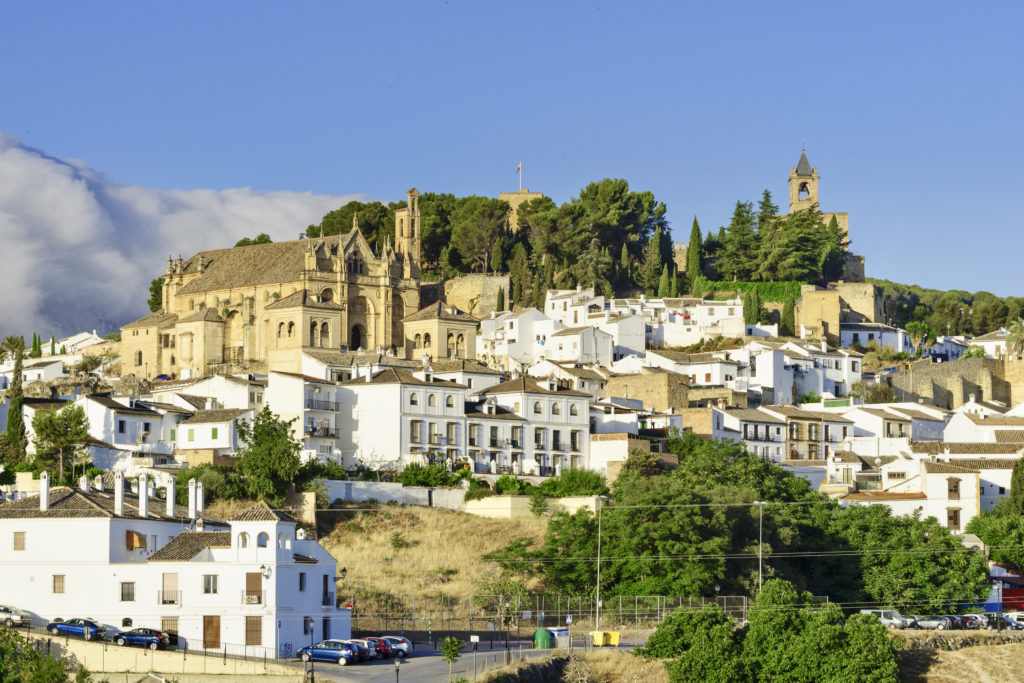
3. Antequera: 1:20 From Cordoba
The Spanish-Baroque town of Antequera is fittingly dubbed the “Florence of Andalusia.” Antequera is a hidden gem in Spain. You’ll have the place mostly to yourself, which is a singular joy in southern Spain.
Antequera boasts an impressive Moorish Alcazaba, almost like a mini Alhambra. It also has a lovely Renaissance church and a stunning medieval and baroque historical core. You’ll have an eyeful of swoonful scenery.
Antequera’s ancient megaliths/dolmens are outside the old town. You’ll see signs. The dolmens date from the Bronze Age and are among the oldest things on the planet. They are essentially Spain’s Stonehenge.
For more details and information, check out my two guides to visiting the town of Antequera and to Antequera’s UNESCO dolmens. Click here to book a guided tour of the dolmens.
I hope you’ve enjoyed my 1 day in Cordoba itinerary. You may enjoy these other travel guides and resources for Spain:
Pin it for later.

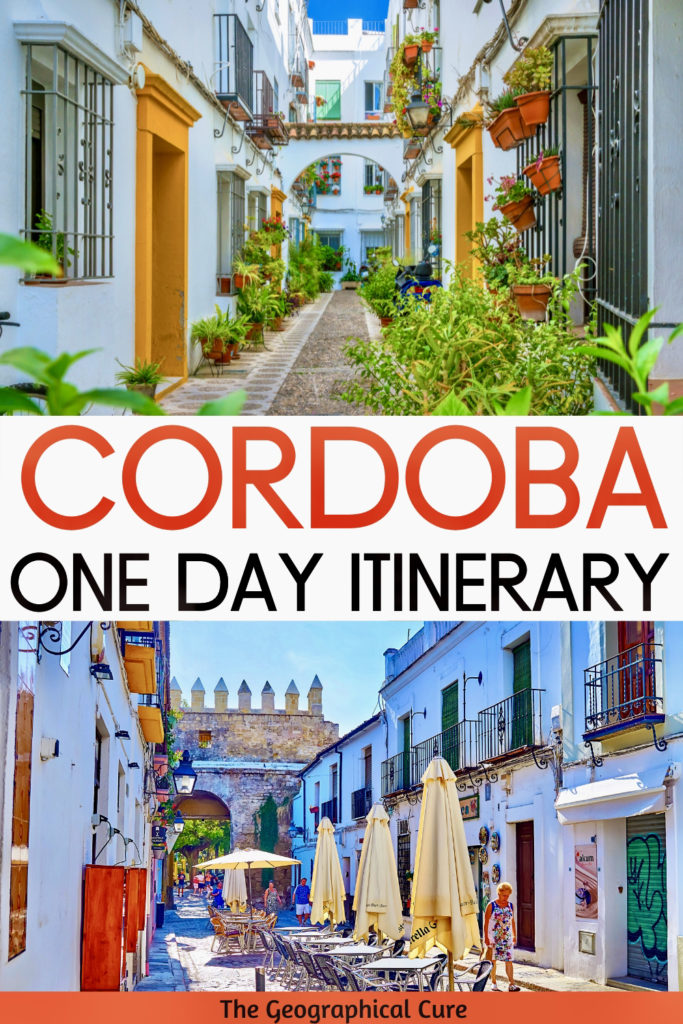
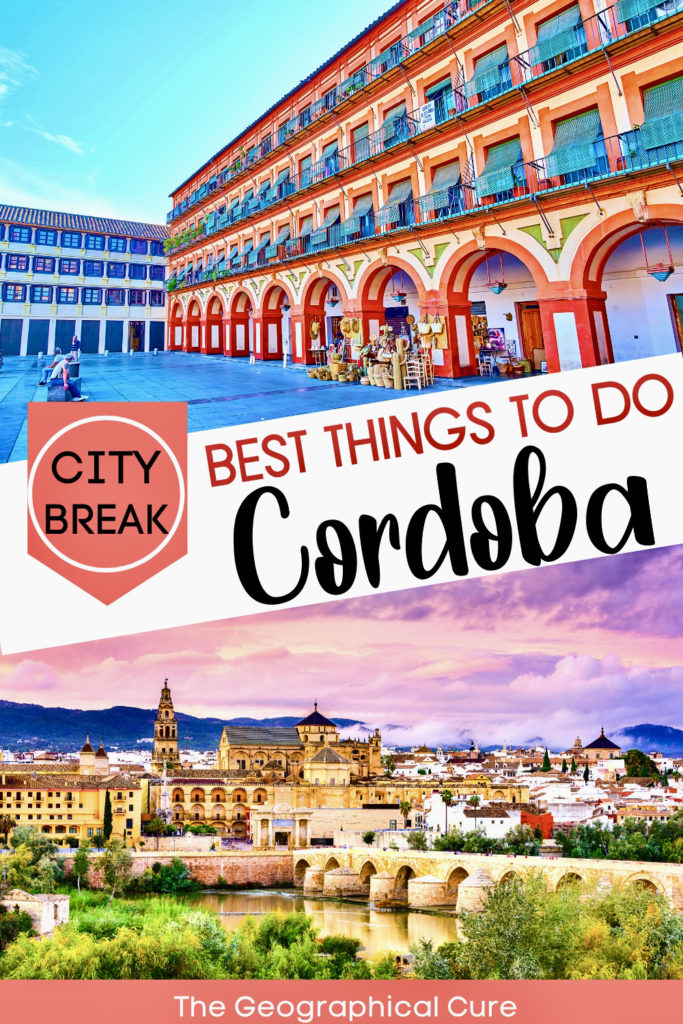
Hi, I really like your travel blog. One small recommendation would be to add a little map that shows where the places are that you are recommending.